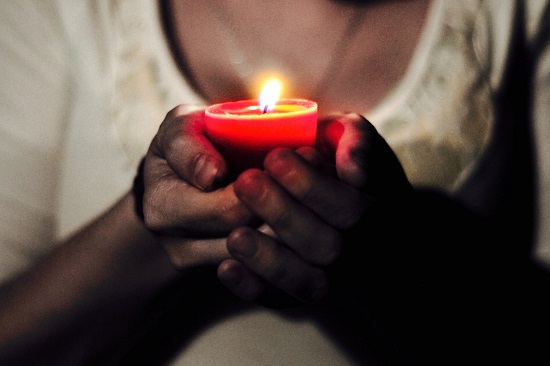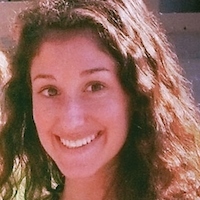In the wake of recent tragedies in Ferguson, Staten Island, Gaza, Iraq, and elsewhere, involving people who are extremely marginalized across many parts of the world, I’d like to talk about healing.
While there certainly is a place for anger and rage against injustice via rallies, protests, and other forms of direct action, a question remains: how do we then stand with and honour the people who have witnessed their brothers and sisters, sons and daughters, being murdered and /or experienced trauma themselves, and march on?
How do we allow people to heal from this trauma and be uplifted from within while also recognizing the systemic forces stacked against our fellow human beings?
Trauma gets stored in our bodies; we get stuck in the flight, fight, or freeze responses to real or perceived threats in our environment. Embodied healing practices (i.e. somatic experiencing, yoga, qi gong, acupuncture, craniosacral therapy, massage therapy, and a range of others across cultures) unlock our trauma and allow us to start to release it and begin to heal (check out Bessel Van Der Kolk’s and Peter Levine’s work for more on this topic). As I set out on a path of offering the (what has been for me) healing practice of yoga to underrepresented young people, as a person of privilege, I’d like to share a little anecdote with you all of a recent experience teaching yoga in a high school:
As I rode the 1 train uptown, noticing the change in demographic from my bougie, predominantly white Chelsea neighborhood up to the predominantly Latino, working class Washington Heights, I thought about the question I was going to be asking the students in class that day, “What do you have within you that you can offer out to others?”
I sat and contemplated: How can I offer myself and my experiences as a privileged white woman without assuming to know or relate to the experiences of a young person of color living in poverty?
How can I celebrate our differences and recognize our inequities as human beings while also believing in our interconnectedness, and that we are not separate? (This is what practicing social work, Buddhism, and yoga simultaneously, does to you).
I entered the doors of George Washington High School, which contains 3,000 students dispersed across four smaller schools, one on each floor; I was stopped at the security check-point. My tote bag filled with yoga mats was too big to fit on the conveyor belt, so the guard searched through the bag by hand. “We have to make sure you don’t have anything that could be used as a weapon, “ she explained.
“Yoga is for stress relief, right?” She asked me, “Yes, it definitely is.” I responded. “I need to do some yoga”, she remarked.
As I proceeded into the gym to begin my class, I started setting up the mats in a circle formation. Two young women came in, I greeted them, and then asked, “Have you guys ever practiced yoga before?” “Uh uh” one responded. “Nope” said the other. “Well, I appreciate you guys being open to a new experience, ” I responded. Then a slim, young latino man entered. I began to introduce the practice and the theme for the day: self-awareness, and he came over to a mat in his socks and remarked, “This is weird, miss”. “It is kind of weird,” I answered. “But, I’m glad you’re willing to give it a try.”
“So what are you guys hoping to get out of this yoga practice?” I asked. “Less stress”, the young man replied. “Stress relief,” replied another student. “Calmness”, replied another.
I guided the students through a brief discussion, a series of breathing exercises, and yoga postures, checking in with them throughout. We progressed through sun salutations, a few balancing poses and then wound down with a few restorative poses and the final resting pose, savasana, after which I checked in with the students. “So, what kinds of things did you notice about yourselves?” One girl commented, “This is the most calm I’ve felt all week.” “So is it what you expected?” I asked. “I feel much more relaxed than I was expecting to”, said the young man.” “It was better,” remarked another young woman.
This calmness felt by the young people was evoked not by doing some pretzel-like poses while wearing Lululemon pants, but by together, over the course of eight weeks, creating a space around us to create space within us–through the breath and through movement–to begin to heal. It is from that space, of tapping into our truest nature, that we can stare adversity and injustice in the face and stand strongly, non-violently against it.
Last night, before the grand jury verdict was announced from Ferguson, Mike Brown’s parents asked for a moment of silence as a symbol of the initial silence from the police in response to their son’s death.
They didn’t ask for a riot, but for silence. Born out of these moments of silence, of stillness, and of calm is an immense capacity for healing from trauma. It is the healing from within and with one another that can, over time, ripple out to heal our communities.
From Washington Heights to Chelsea to Ferguson to Gaza, may all beings everywhere be allowed to heal.
Love elephant and want to go steady?
Sign up for our (curated) daily and weekly newsletters!
Author: Pam Lozoff
Editor: Renee Picard
Photo: Courtney Carmody at Flickr







Read 1 comment and reply